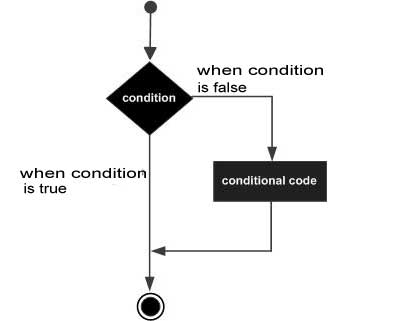
- Perl 基础知识
- Perl - 主页
- Perl - 简介
- Perl - 环境
- Perl - 语法概述
- Perl - 数据类型
- Perl - 变量
- Perl - 标量
- Perl - 数组
- Perl - 哈希
- Perl - IF...ELSE
- Perl - 循环
- Perl - 运算符
- Perl - 日期和时间
- Perl - 子例程
- Perl - 参考资料
- Perl - 格式
- Perl - 文件 I/O
- Perl - 目录
- Perl - 错误处理
- Perl - 特殊变量
- Perl - 编码标准
- Perl - 正则表达式
- Perl - 发送电子邮件
- Perl 高级
- Perl - 套接字编程
- Perl - 面向对象
- Perl - 数据库访问
- Perl - CGI 编程
- Perl - 包和模块
- Perl - 流程管理
- Perl - 嵌入式文档
- Perl - 函数参考
- Perl 有用资源
- Perl - 问题与解答
- Perl - 快速指南
- Perl - 有用的资源
- Perl - 讨论
Perl except 语句
Perl except语句由一个布尔表达式后跟一个或多个语句组成。
句法
Perl 编程语言中 except 语句的语法是 -
unless(boolean_expression) {
# statement(s) will execute if the given condition is false
}
如果布尔表达式的计算结果为false,则将执行 except 语句内的代码块。如果布尔表达式的计算结果为true,则将执行 except 语句末尾(右大括号之后)后的第一组代码。
数字 0、字符串 '0' 和 "" 、空列表 () 和 undef在布尔上下文中都是false ,所有其他值都是true。否定真值!or not返回一个特殊的 false 值。
流程图

例子
#!/usr/local/bin/perl
$a = 20;
# check the boolean condition using unless statement
unless( $a < 20 ) {
# if condition is false then print the following
printf "a is not less than 20\n";
}
print "value of a is : $a\n";
$a = "";
# check the boolean condition using unless statement
unless ( $a ) {
# if condition is false then print the following
printf "a has a false value\n";
}
print "value of a is : $a\n";
第一个 except 语句使用小于运算符 (<),它比较两个操作数,如果第一个操作数小于第二个操作数,则返回 true,否则返回 false。因此,当执行上面的代码时,它会产生以下结果 -
a is not less than 20 value of a is : 20 a has a false value value of a is :
perl_conditions.htm